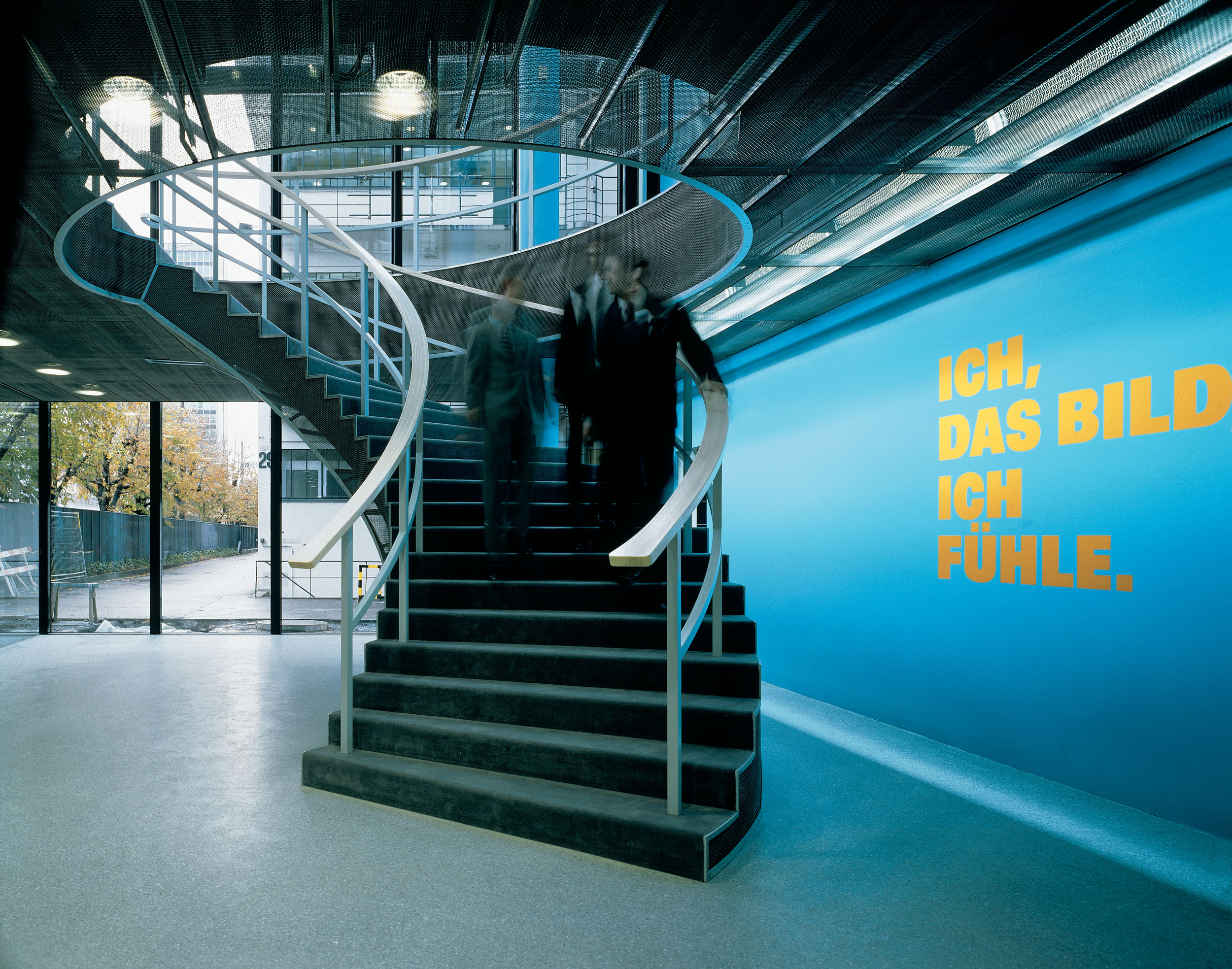
Fit for movement
Movement and ergonomics play a key role in creating a healthy and stimulating working environment.
Down“The very essence of architecture consists of a variety and development reminiscent of natural organic life. This is the only true style in architecture.”Alvar Aalto – Architect and Designer
The natural flow
People’s movement which takes place every day follows the given spatial and architectural elements and forms an additional invisible space within the architecture. This movement space is shaped through an aggregation of moves over a longer period and has usually soft, round edges, as corners are generally avoided by people. By bringing the geometry of the spaces closer to human being’s natural flow people are able to better connect and engage with the spaces and dynamic way.
Monotonous repetition is broken and the circulation through space becomes an interesting experience through a sequence of spaces.
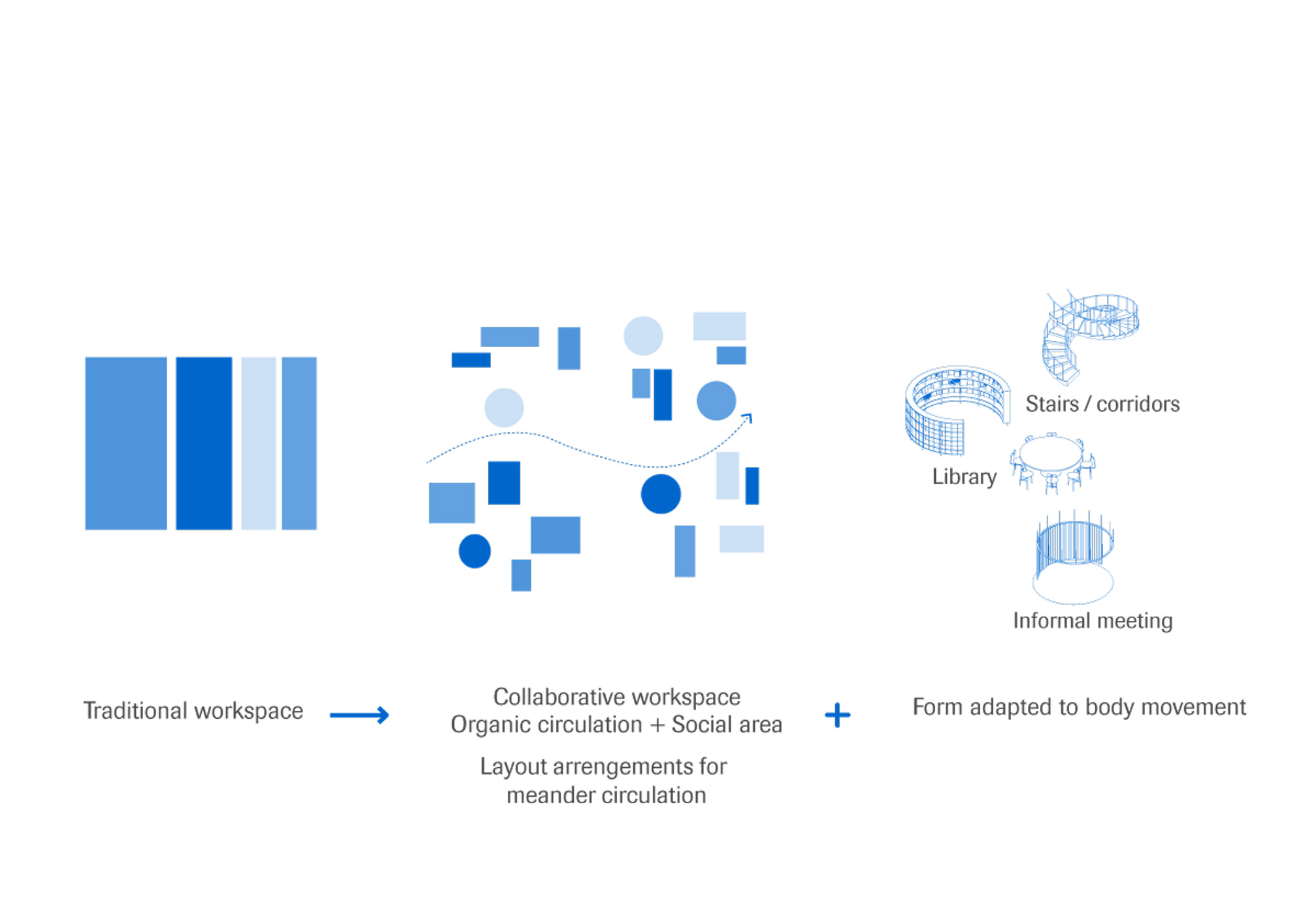
The science of comfort
A workplace adapted to human movement helps release stress. Ergonomics aims to improve human interaction with objects and the environment, and prevent or limit the risk of illness or injury. It is particularly relevant in the workplace, where activities may be repeated frequently and positions maintained for a long period of time.
Do's
- Offer variable placement and seating options that allow for alternative postures and maintaining a neutral body position.
- The circular geometry responds to the need to attend all users in the reception hall where circulation flow goes around it. Organic forms should stick to pure and simple.
- Strategically positioning of the stairs, making them more inviting, promotes walking and interaction.
Don’t
-
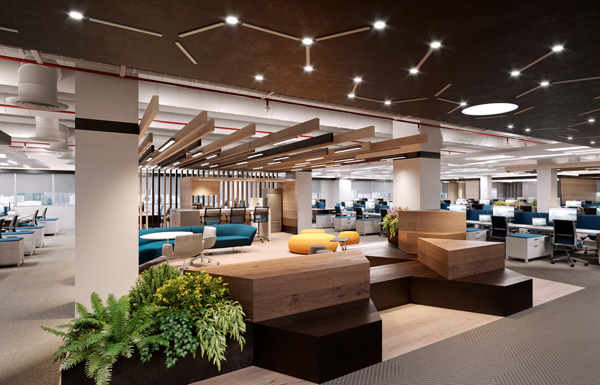
Avoid arbitrary irregular geometries, and instead focus on pure and functional forms.
-
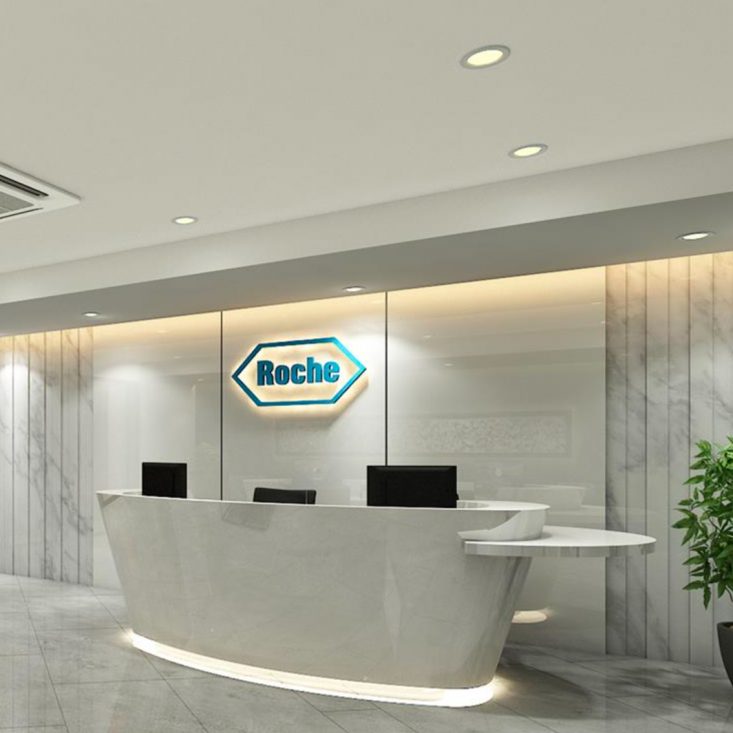
Organic geometries should relate to a clear function; they are not applied randomly.
-
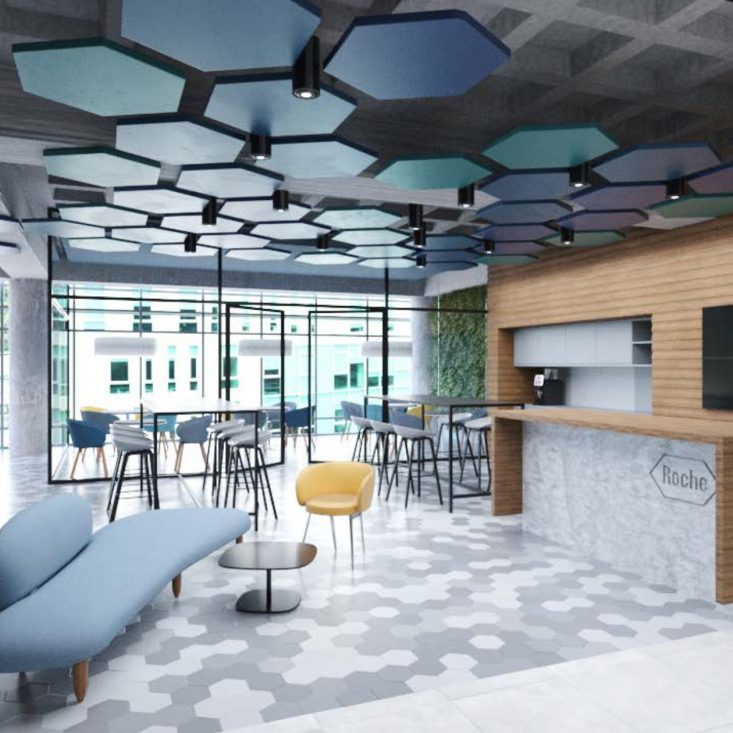
Avoid hexagonal geometries referencing the Roche logo.
Key to Fit for movement
- Focus on people, and consider non-linear spatial arrangements with meandering circulation to create a more interesting spatial experience.
- Design, where appropriate, simple organic or circular shapes that accompany the body movement.